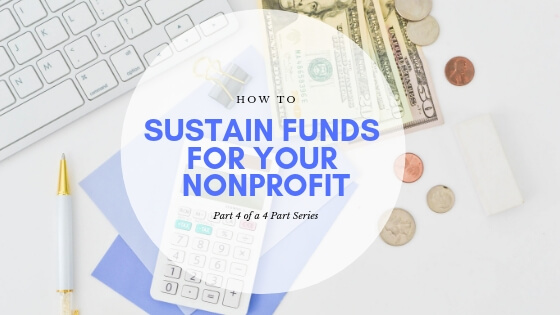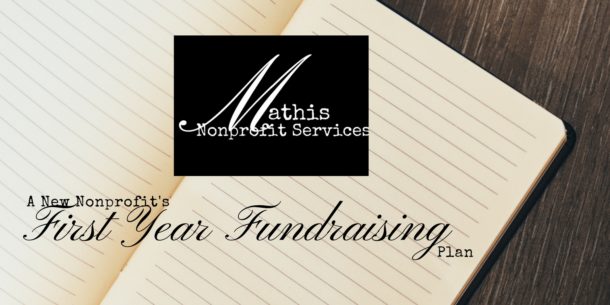Our love story continues today as we continue to sustain funds by stewarding our donors. I’ll bet you thought asking and receiving was the end of things. Well, a really good love affair lasts decades, stays connected, and evolves. It’s exactly what a donor relationship should do. If you missed out on the other posts, you can find the first here, the second here, and the third here.
Stewarding- Stage Four of the Donor Funnel
Continuing in our dating/ marriage analogy, Stewarding is an “after the vows” phase. Yes, I know it sounds like we should be watching an episode of The Bachelor but stay with me here. This is the most important phase because this is where retention comes in. Do you remember how hard we worked to get the donor here? Why do we want to throw it all away and send the donor packing like some mascara-running, ugly cry drama scene in an episode of The Bachelor? (I had to get another reference in. It was too good to pass up!).
What does stewarding look like?
Just like in marriage, you have to make sure you appreciate your spouse every day and strive for new ways to keep the romance alive. I’ve been married twenty years and some days are more of a struggle than others. Occasionally, my husband will write me love post-its and stick them in places where I will find them throughout my day. They make me smile and deepen my love for him. Your nonprofit should find ways to write your donors love notes and say thank you every chance you get. Communication in this stage is to keep in touch, thank, and provide transparency.
What activities are good for stewarding?
Let’s take a look at a few stewarding activities nonprofits commonly and not so commonly used.
- Thank you 24 hours after a donation. No slack in this one. The sooner you thank, the better the odds for the next gift.
- Recognition activities- thank you events, plaques, or simply their photo on your social media and in your newsletter.
- Annual Report is good for both asking and stewarding. It provides transparency and an actual where did my money go report.
- One-on-one communications and visits. Personalized notes and emails along with visits go a long way with bigger donors.
- Gifts
One of my most favorite stewarding activities for anyone serving the organization and especially for the fundraising squeamish is to do a thank-a-thon. Have those that aren’t “in” to fundraising call portions of your donor list. Supply the name, phone number, and (if its a Board member calling) the donation amount. The only goal is to thank the people that donate. I was involved in this years ago for an organization and I was nervous about doing it but I was supplied a script and I set out to call. I left messages a lot but when I did get a donor. Oh, it was food for my soul. If they weren’t just completely shocked, then they were quick to tell me why they gave to the organization. Some of those stories brought tears to my eyes!! It was a great way to connect to the front lines and I had stories to tell (leaving name and amount details out) when I talked to other potential donors. But most of all, it warmed my heart and created a deeper sense of commitment.
One last note, these steps should always be incorporated into your Fundraising Plan.
Take Action
- What can you do right now to cultivate your prospects? Tell me in the comments or join the conversation on Mathis Nonprofit Services Facebook page or in the group At the Top: Small Nonprofit Leaders.
- To go deeper into the subject of sustainable fundraising, read the book The Eight Principles of Sustainable Fundraising by Larry C. Johnson, CFRE.* I have read the book and it really is the fundamental principles to sustain your fundraising efforts.
*The affiliate link takes you to Amazon as a convenience to order. I get a commission of the sale when you use the link. As always, when I recommend something, it’s because I truly believe in it. When you support the affiliate, it helps me bring free content to you.
Well, this wraps up the series. I want to thank the anonymous person who responded to the survey with the question, “How to Sustain funds that will help with programs, salaries, and operational costs?” Your question sparked this series. Once you have a donor base, you can ask for funds very generally. Your asking phase will be full of connecting your mission with donations and when you do that, it’s unrestricted funds and can be used for general operations. When you need funds for programs, you can ask for specific program-related expenses. Just be careful. If you ask for something specific, it becomes designated funds and can only be used for that purpose.
If you liked this series, please share!


 Most nonprofit leaders lay awake at night trying to figure out how to fund their mission.
Hi! I'm Alesha.
I teach sustainable fundraising in a way that they can take action today so they can serve their clients.
I can help you move from just getting started funding your new nonprofit to gaining confidence in your fundraising and building relationships to knowing what works for your organization and looking at the infinite game when it comes to funding. I’ve worked with nonprofit Founders and written the book I HAVE MY 501(C)3! NOW WHAT?!? Your Blueprint to Starting Your Nonprofit Without Being the Sole Funder that lays the foundations for funding in a new nonprofit.
I’ve worked in Development (Fundraising) Departments in large organizations and I know the no cost, low-cost methods they use to bring in funding. I bring those sound strategies to the nonprofits I serve.
Most nonprofit leaders lay awake at night trying to figure out how to fund their mission.
Hi! I'm Alesha.
I teach sustainable fundraising in a way that they can take action today so they can serve their clients.
I can help you move from just getting started funding your new nonprofit to gaining confidence in your fundraising and building relationships to knowing what works for your organization and looking at the infinite game when it comes to funding. I’ve worked with nonprofit Founders and written the book I HAVE MY 501(C)3! NOW WHAT?!? Your Blueprint to Starting Your Nonprofit Without Being the Sole Funder that lays the foundations for funding in a new nonprofit.
I’ve worked in Development (Fundraising) Departments in large organizations and I know the no cost, low-cost methods they use to bring in funding. I bring those sound strategies to the nonprofits I serve.